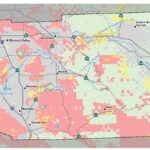By Shannon Hodgen Jacobs
Student Life and Leadership Coordinator
Idyllwild Arts Academy
Next week, three sophomores and one junior from Idyllwild Arts Academy will join me in flying to Denver, Colo., for the Second Annual Green Schools International Conference, Feb. 27 to 29.
It’s safe to say that these students are just a tad excited, having proved their readiness and willingness to assist in bringing green changes to our school through written essays.
In these essays, they explain what their specific “area of interest” is and how they plan to begin making changes within our school. In fact, one of these students will be writing the next Town Crier “Sustainability” column. In addition, each student will “report” to the student body regarding their experience incorporating their chosen artistic medium.
One of the students expressed her interest in “making our school more ecofriendly while saving the school money,” which weaves in beautifully with how the savings could someday fund a partial or full scholarship for a student in need.
Another student recognizes that she will need skills to advocate the need for sustainable practices to her fellow students. It is indeed true that some cultures represented in our student body have not yet had the experience of scraping their plates into a compost bin or harvesting a vegetable whose seed they had a hand in planting.
This student wishes to learn to articulate this need to those from other cultures. Another student plans to specialize in interior design and seeks to learn more about incorporating ecofriendly and recycled materials into his work. On student, who is a junior, desperately wants a working compost that will someday supplement a school garden.
These students have also joined and committed to membership in one of our six sustainability subcommittees at school. These students are bright, excited artists who, alongside being very thoughtful individuals, are perfect to begin the job of uniting a new culture into some long-standing ones which have existed within the Idyllwild Arts community.
While these four student-artists and myself are in Denver, we will participate in various breakout sessions, learning all there is to know about what it takes to become a “Green School.”
We will take away lessons about how to “Expand our Awareness in the Green Schoolyard.” (Fortunately, our “schoolyard” is over 200 acres of forests, meadows and creeks.) We’ll also learn how we can “Green our Purchasing Program” at school. Of course my personal favorite is “Learn How to Connect Kids to Real Food Through the Use of Gardens in Schools.”
All in all, there are over 100 breakout sessions taking place over the day and a half we’ll be at the conference. I feel unbelievably fortunate to have four co-attendees who will voraciously devour information alongside myself.
As one would guess, the real challenge for us is choosing which sessions to attend. They all look wonderful, applicable and worthwhile. We will most definitely have to split up individually to experience the maximum number of sessions.
Yet another grouping of activities that piques our interest are the “Solution Summits” which are being offered during the conference: “The Solutions Summits will bring key players to the table — literally around a table — for 3 or 4 hours in a facilitated discussion format to define and set goals for future action. The Solutions Summits are a major departure from the typical one-way information sharing that occurs at most conferences.”
I noticed that some of those key players are government officials both from federal and state governments. What attending these summits will mean is that our students will get to sit down at a table with someone such as Dr. Janey Thornton, USDA deputy under secretary for food, nutrition and consumer services, and discuss how we can get good, local, nutritious food into our schools. We will also have the opportunity to have breakfast on two mornings with members of the Environmental Protection Agency.
We at Idyllwild Arts are underway with the task of greening the campus. We have already made changes in our kitchen, on our grounds and within our plans to build new buildings and update existing buildings.
We continue to seek and explore the incorporation of environmental conservation and preservation into both our arts and academic curriculum.
Until now, we have made and carried out these plans with nominal student involvement. These four students are the beginnings of a new tradition of student directed projects and initiatives which will change our school.
It is not an accident that four students who are underclassmen were chosen to attend. We seek continuity through subsequent years. We wish to have our current culture change and build through the years.
To create lasting change takes time and teaching by example. What it will take is one of these four students simply saying next year to a new freshman, “We do it this way now.”










